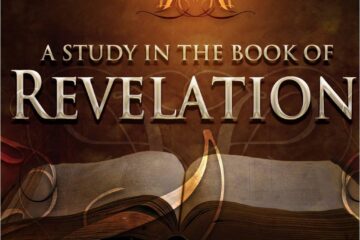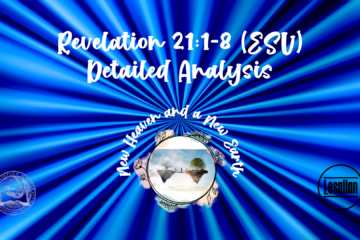Written by Lesallan Bostron©
BIB3560 Revelation (ONLSP23)
Ohio Christian University
Pastor Al Soultz April 12, 2023

Approaches to Interpreting Revelation Discussion
According to the reading assigned for this week, there are four major approaches to interpreting Revelation. These interpretive approaches include “the preterist view, the historicist view, the futurist, and the idealist view” (Beale, 1999). The assigned text also mentions a fifth view (Beale, 1999).
The Preterist View:
There are two forms to the preterist perspective; the first view sees that what is written in Revelation has already happened in the fall of Jerusalem in A.D. 70. Those that use this approach to interpreting Revelation hold that the prophecies found have already been fulfilled in the first century with the destruction of Jerusalem. The second perspective or view, as seen from the preterist, sees Revelation as s fall of the Roman Empire in A.D. 476.
The Historicist View:
There are many versions and forms of the historicist approach. The approach used in the Bible is a method of interpretation of Biblical prophecies that uses the symbols, persons, nations, or events that have already occurred and extends things that have happened through the present to the future. The historicist approach was widespread during the Reformation and was used to indicate that the Catholic Church was a part of the end-time apostasy. The historicist approach has the pope as the Antichrist. This approach (historicist) has also been used to predict the date of the end of the world based on the Book of Revelation. Those holding this view believe that the Book of Revelation provides a symbolic overview of the entire course of church history from the first century to the second coming of Christ.
The Futurist View:
There are two forms of futurist view; both hold that the events in the Book of Revelation are still future events. This view has that these prophetic events will take place shortly before the return of Christ. The futurist perspective also holds that the visions and symbolism found in the Book of Revelation are key to the future events preceding the end of history. Many futurists also regard all things from Revelation 4:1 as future events that have not yet occurred.
The Idealist View:
The idealist perspective (view) holds that Revelation is not a literal prediction of future events, but a symbolic depiction of the spiritual struggle between God and Satan. The book of Revelation is the ongoing battle between good and evil.
The strengths and weaknesses of each approach are: When the preterist view is looked at, it takes the historical context and the audience of Revelation seriously. When the historical context and the audience are taken seriously, the preterist view shows how God judged the enemies of His people in the first century. The preterist also avoids speculating on future events that may not be related to Biblical prophecies. This disadvantage of the preterist view is that it limits the relevance and application of Revelation to only one period of history. The preterist view (perspective) ignores the future of God’s plan for His kingdom and people. This view also has difficulty going beyond the events of A.D. 70, such as the resurrection, final judgment, and the newly promised heaven and earth.
The view from the historicist perspective has the advantage of tracing God’s Providence and sovereignty throughout history. The historicist view also has the advantage of how God fulfilled His promises and purposes in different historical events and figures. The historicist view gives hope and encouragement to Christians who face persecution and oppression in various ages. The disadvantage of the historicist view is that it is too subjective and arbitrary when identifying the symbols and images found in Revelation with any specific historical realities. The historicist view also has the disadvantage of always having to be constantly revised and updated as history unfolds. Lastly, it fails to account for Revelation’s literary genre and structure.
The advantages of the futurist view are taking Revelation’s prophetic nature and message seriously and showing how God will fulfill his promises and purposes in the future. It gives hope to Christians who look forward to the return of Christ and the establishment of His Kingdom. The disadvantage of this view (futurist) is that it ignores the historical context and the audience of Revelation. The futurist applies Revelation to only one period of history, the end of time. This view can also be too literal or too speculative when interpreting the symbols and images of Revelation. Like the historicist view, it fails to account for Revelation’s literary genre and structure.
The view from the idealist has the advantage of emphasizing the spiritual and timeless truths of Revelation with the application relevant to all generations of Christians. A further advantage found in this view is that it avoids being too literal or too historical when interpreting the symbols and images of Revelation. This view recognizes the theological and ethical significance of Revelation. The disadvantage of the idealist view is that it denies any historical or future fulfillment of Revelation, reducing it to mere allegory or moral lessons. The weakness is that it lacks appreciation for the prophetic nature, the message of Revelation, and its connection to other Biblical prophecies.
References:
Beale, G. K. (1999). Revelation: a commentary on the Greek text. W.B. Eerdmans.
Mounce, R. H. (1997). The Book of Revelation. W.B. Eerdmans.


